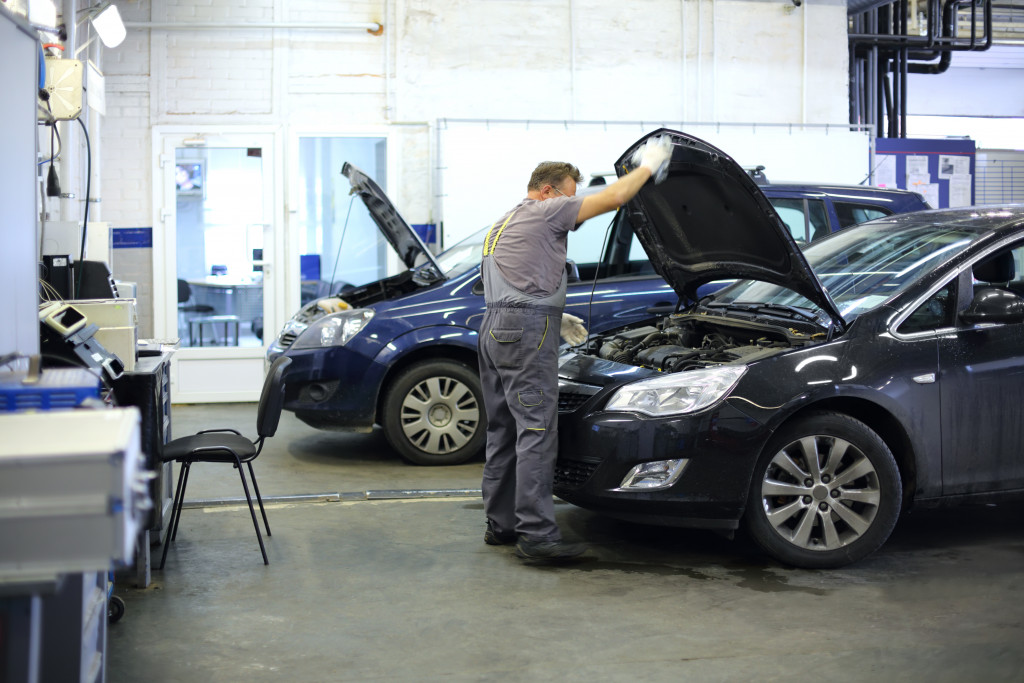• Common causes of fleet accidents include driver fatigue, poor vision, bad weather conditions, and distracted driving.
• Strict rules and regulations should be implemented to ensure driver safety and reduce the risk of an accident.
• Comprehensive training should be provided to teach drivers safe driving habits and recognize potential hazards on the road.
• Regular vehicle inspections should also be conducted to identify potential problems that could lead to an accident.
• Make sure drivers receive regular eye care and provide LASIK options if necessary.
As a fleet owner, you are responsible for ensuring the safety of your drivers and their cargo. Unfortunately, accidents can still occur despite your best efforts. Therefore, it is important to understand the potential causes of fleet accidents and develop strategies to prevent them.
Common Causes of Fleet Accidents
Although accidents are often unpredictable, some common factors can contribute to them. Some accidents could only be considered minor, affecting only the vehicles involved. But other accidents can be more serious and even lead to the fatality of your drivers, the occupants of other vehicles, and even pedestrians.
Some of the more common causes of fleet accidents include:
Driver Fatigue
One of the leading causes of fleet accidents is driver fatigue. When drivers become overly tired from long hours on the road, they are more likely to make mistakes that can lead to an accident. It can also cause them to become less alert and attentive while driving, increasing their chances of being involved in an accident. In fact, the National Highway Traffic Safety Administration estimates that 100,000 police-reported crashes yearly involve drowsy driving, resulting in 1,550 fatalities and 71,000 injuries.
Bad Weather Conditions
Another major cause of fleet accidents is bad weather conditions, such as heavy rain or snowfall. This may reduce visibility, making it difficult for drivers to see other vehicles or potential obstacles on the road. Additionally, extreme weather conditions in certain areas may lead to slippery roads and surfaces, making controlling a vehicle difficult.
Distracted Driving
Distracted driving has become an increasingly common problem among commercial fleets. Drivers can be distracted by conversations on their cell phones, texting while driving, or checking directions from GPS devices. Other distractions, such as eating, drinking, or adjusting the radio, can take a driver’s attention away from driving and lead to an accident.
Poor Vision
Another potential cause of fleet accidents is poor vision. A study shows 2% to 3% of drivers have vision acuity below the minimum legal standard. In certain states, such as California and New York, a driver must pass a vision test requiring them to have at least 20/40 vision in their better eye. Additionally, even if an individual has been diagnosed with an eye disorder or disease, 85% have some remaining sight.

Prevention Strategies
Fortunately, these problems can be addressed with a few simple strategies. As your drivers’ employer, you should ensure their safety on the road. Some key strategies for preventing fleet accidents include:
Enforcing Rules & Regulations
Establishing strict rules and regulations that drivers must abide by is essential in minimizing the risk of an accident. This includes having a curfew for long-distance trips, limiting driving hours per day/week, and requiring regular breaks.
When formulating your policies, make sure to include the number of hours a driver should work, the amount of rest they must take between shifts, and any other regulations you believe are necessary. It would also help to ensure that you compensate your drivers fairly, so they don’t have to work excessive hours and become fatigued.
Providing Training
Offering comprehensive training for drivers on the road is also essential in preventing accidents. This includes teaching them about safe driving habits and providing refresher courses yearly to ensure they are updated with the latest industry practices. You can also provide driver safety programs that teach them to recognize hazards, avoid distractions while driving, and take necessary precautions.
Conduct Regular Vehicle Inspections
Regular vehicle inspections can help identify potential problems that could lead to an accident. Check brakes, tires, windshield wipers, and other vehicle components. Additionally, ensure the drivers know how to perform minor checks, such as checking their tire pressure, fluids, oil levels, lights, and turn signals.

Provide Eye Care
It is also important to provide regular eye care for all drivers. Make sure they pass the necessary vision tests and know how to properly manage any existing vision problems. Additionally, remind them of the importance of wearing sunglasses when driving in bright conditions to reduce glare and protect their eyes from the sun’s rays. Also, provide LASIK eye surgery options to your drivers with vision problems. This will help improve their vision by reshaping the cornea, which helps the eyes focus better.
Your drivers’ safety is your company’s priority, and understanding the potential causes of fleet accidents is the first step in taking necessary prevention measures. By implementing these strategies, you can help ensure your drivers’ safety and reduce the risk of an accident.

